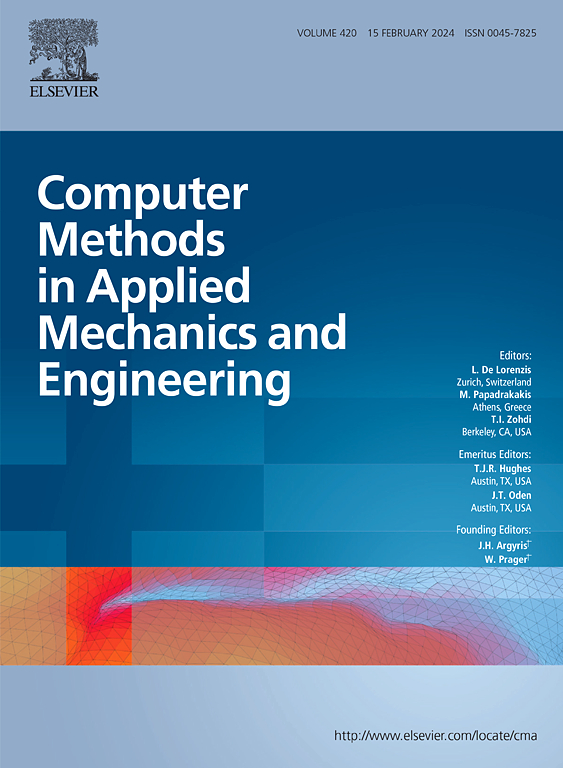Self-stabilized virtual element modeling of 2D mixed-mode cohesive crack propagation in isotropic elastic solids
IF 6.9
1区 工程技术
Q1 ENGINEERING, MULTIDISCIPLINARY
Computer Methods in Applied Mechanics and Engineering
Pub Date : 2025-03-10
DOI:10.1016/j.cma.2025.117880
引用次数: 0
Abstract
A comprehensive strategy for the simulation of mixed-mode cohesive crack propagation in a mesh of originally self-stabilized Virtual Elements (VEs) is proposed. Exploiting the VEs substantial insensitivity to mesh distortion, the propagating cohesive crack is accommodated within existing self-stabilized first-order quadrilateral VEs by simply adding new edges separated by a cohesive interface. The added edges make however the VE unstable and a new procedure for the stabilization of initially stable VE is developed. The method is formulated within a recently proposed Hu–Washizu variational framework, allowing for a higher order, independent modeling of stresses. In this way, a more accurate estimate of the stress at the tip of the cohesive process zone can be achieved allowing for a more accurate assessment of crack propagation conditions and direction. The proposed method is validated by application to several benchmark problems.
求助全文
约1分钟内获得全文
求助全文
来源期刊
CiteScore
12.70
自引率
15.30%
发文量
719
审稿时长
44 days
期刊介绍:
Computer Methods in Applied Mechanics and Engineering stands as a cornerstone in the realm of computational science and engineering. With a history spanning over five decades, the journal has been a key platform for disseminating papers on advanced mathematical modeling and numerical solutions. Interdisciplinary in nature, these contributions encompass mechanics, mathematics, computer science, and various scientific disciplines. The journal welcomes a broad range of computational methods addressing the simulation, analysis, and design of complex physical problems, making it a vital resource for researchers in the field.

 求助内容:
求助内容: 应助结果提醒方式:
应助结果提醒方式:


